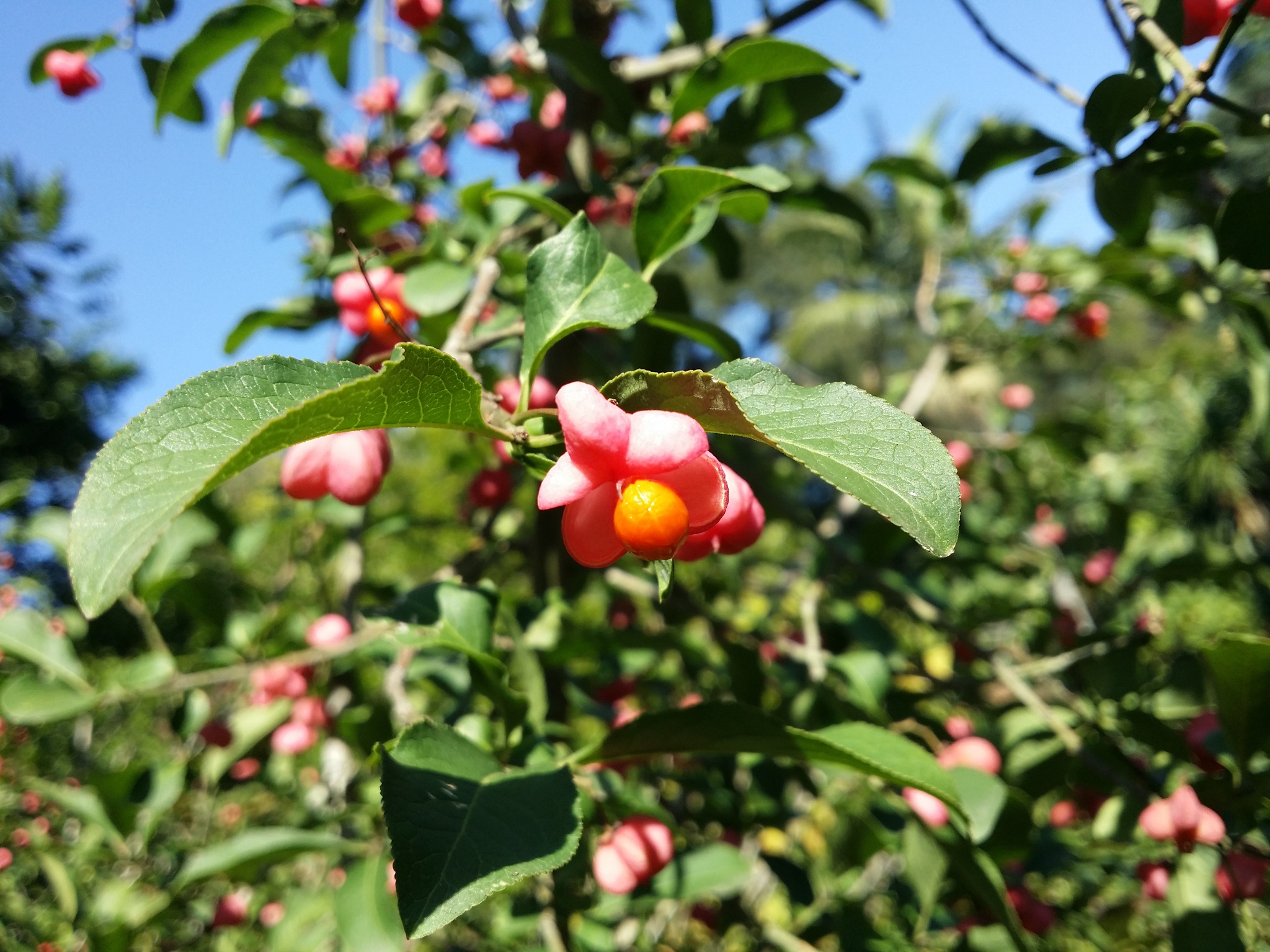
Trees, shrubs, or herbs (annuals or perennials), sometimes deciduous. Leaves alternate and spiral or 2-ranked, or opposite, simple, rarely scale-like or absent, entire to serrate; stipules small or absent. Plants polygamous, monoecious or dioecious. Inflorescence axillary or terminal, cymose, thyrsoid, paniculate, racemose, or flowers solitary; bracts usually present. Flowers regular, usually bisexual or occasioally unisexual, sometimes with a short hypanthium; sepals 3–5, imbricate or valvate, free or united at base; petals 3–5, imbricate, rarely valvate, contorted, free or fused to varying degrees; stamens usually 2–5, opposite sepals, rarely alternating with staminodes, filaments inserted on or beneath disc (if present), filaments free or fused, all equal or sometimes 3 longer than the other two, anthers usually 2-celled, opening by longitudinal slits; nectar disc usually present; ovary superior or half-inferior, partly or completely immersed in disc or free, 1–10-celled, with axile placentation, ovules 1–many per cell, style prominent, short or obsolete, stigma capitate or 2–5-lobed. Fruit a loculicidal capsule, schizocarp, berry, samara or drupe; seeds often with red aril, sometimes winged.
Trees occasionally cultivated in old public gardens include Elaeodendron croceum (Thunb.) DC., Red Saffronwood, from S Africa, which has broadly elliptic leaves (specimens may be seen by the Economics building, Melbourne University and at the Royal Bot. Gds, Melbourne); and Maytenus boaria Molina, common name Mayten, from Chile, which has finely toothed lanceolate leaves to 5 cm long. In warmer regions of Australia native species of Cassine, Celastrus and Maytenus are occasionally grown.
Some species, especially of Maytenus, are a source of timbers and dyes. Species of Euonymus, Celastrus and Maytenus have medicinal properties and Catha edulis (Vahl) Forssk. ex Endl. , which is occasionally cultivated in botanic gardens, is the source of a stimulant widely used in Ethiopia and called Khat. Euonymus europaeus L. is the source of gunpowder charcoal, as well as a dye used to colour butter and a timber ideal for fine woodwork.
Flowers commonly small and regular, petals sometimes fused into a tube, prominent nectar disc around the ovary present, ovary usually superior.
94 genera and about 1410 species, widely distributed in tropical and subtropical regions, with a few genera extending into temperate areas; 17 genera (8 endemic) and about 55 species in Australia.
Now includes Hippocrateaceae and Stackhousiaceae. The treatment here follows Stevens, P.F. (2018, Angiosperm Phylogeny Website).
Source: (2002). Celastraceae. In: . Horticultural Flora of South-eastern Australia. Volume 3. Flowering plants. Dicotyledons. Part 2. The identification of garden and cultivated plants. University of New South Wales Press.
Updated by: Val Stajsic, March 2018
